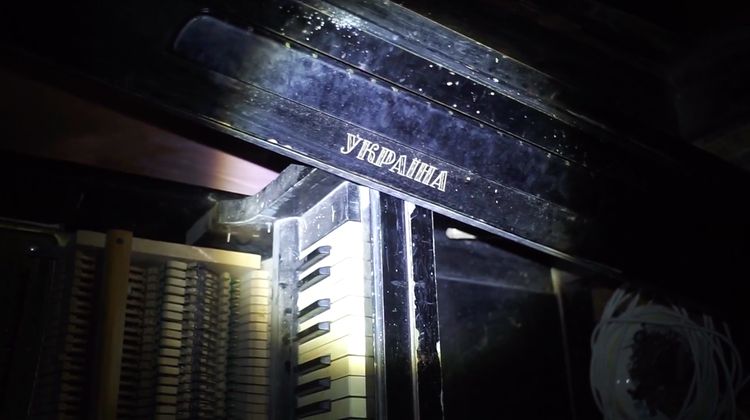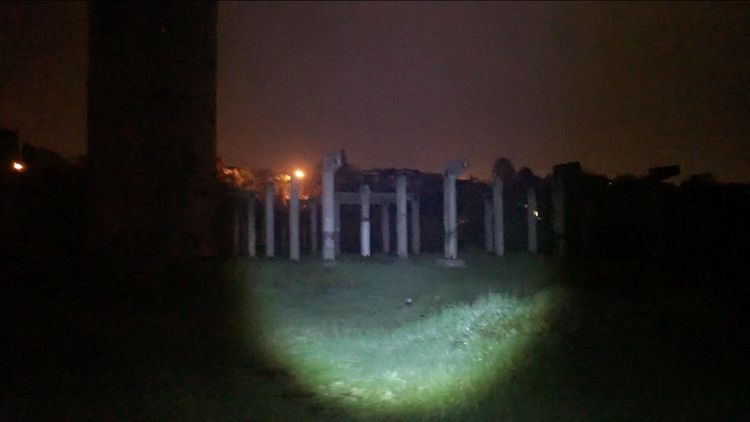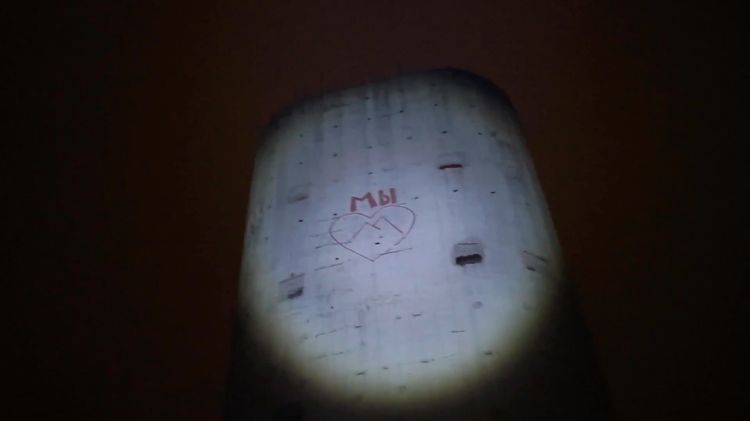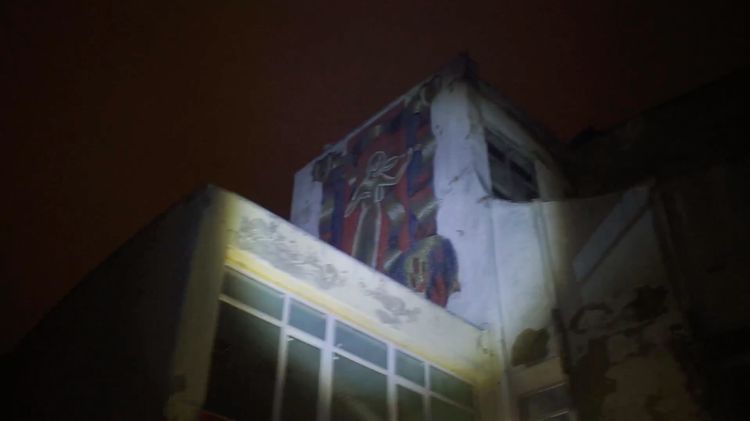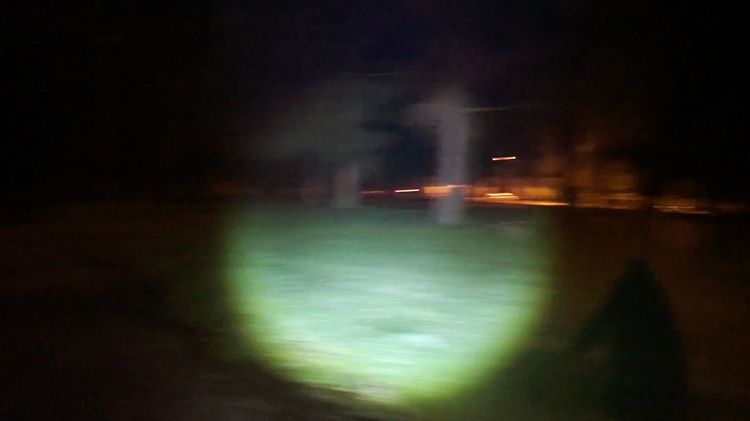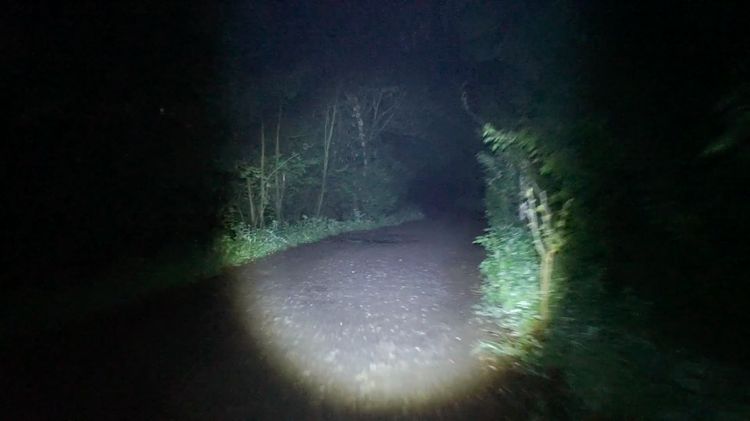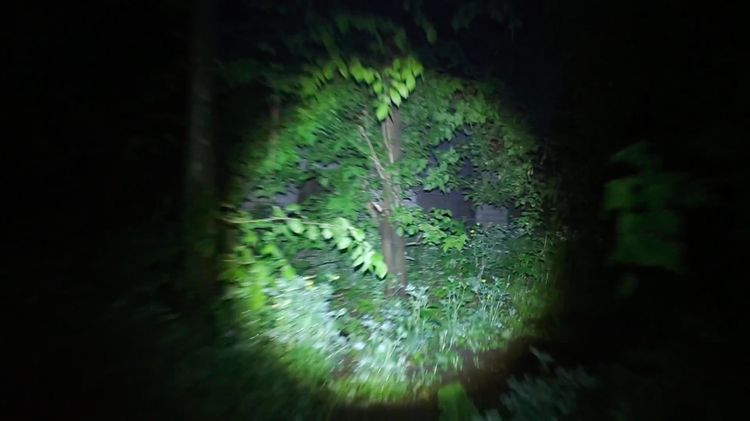The landscape has a mind all its own
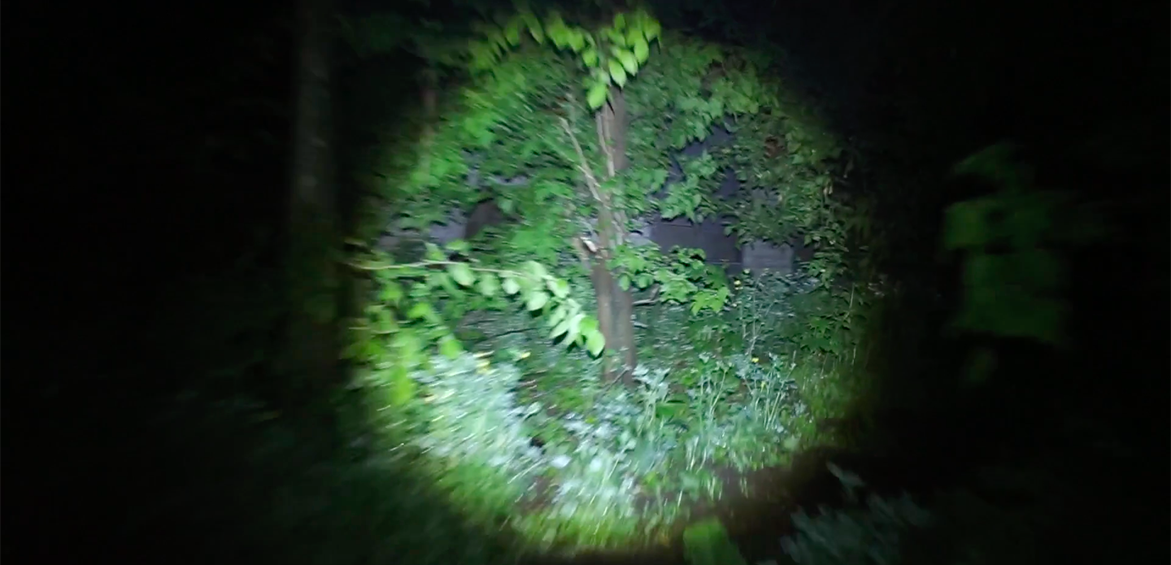
As part of IZOLYATSIA’s ongoing Zazemlennya research, team members Valeriia Buradzhyieva and Wilson A. Fisher have been focusing on the thematic framework of EARTHWORKS.
Today, they share a work by the Ukrainian interdisciplinary artist Anton Saienko which has been guiding their thinking, and which partly inspires an upcoming report.
Born in the northeastern Ukrainian city of Sumy, Saineko is now based in Kyiv, where he is completing his studies at the National Academy of Fine Arts and Architecture. The artist, a regular participant in the annual Mohrytsia festival, is a protagonist of Ukrainian performance and land art — two disciplines of pronounced significance in the country’s contemporary art community. His work, encompassing graphics, video, music, sculpture, and spoken word, is notable for its durability, speed, and a mood of tempestuous unease. A storm is always looming on the horizon.
For EARTHWORKS, Fisher and Buradzhyieva have been dwelling on Saienko’s Смуга (trans. Stripe), an immersive installation curated by Daria Shevtsova staged in Kyiv in the fall of 2019 in a solo presentation at Closer nightclub’s OK Projects blackbox space.
Anton Saienko, МЫ (2019)
Смуга has three constituent parts—a single-channel film titled МЫ (trans. WE), live acoustics, and the unsettling sensory deprivation associated with the exhibition hall’s dark, lightless atmosphere. The film, the work’s core element, is a spree through Sumy at night, starting in the artist’s home and ending with a fixation on ‘МЫ’ written on the side of a carcass of a building which was never finished. Along the way, Saienko, who controls the camera and whose shadow fleetingly enters the frame, follows a ragged path full of detours. Are we going in circles? Are we on the edge? Or are we in the center?
A mosaic plays the violin. Fluorescent lights tinge the black night orange. Thick vegetation seems to be consuming the urban setting, invading it, reclaiming it, and erasing it. Parks are not an escape, but an abyss. The concrete jungle is, indeed, a jungle — full of species and sights which cause your heart to beat faster and faster and faster.
As has become an intriguing, recurring facet of Saienko’s practice, the Смуга audience witnessed a work engaged in a simultaneous process of making and remaking. This characteristic came courtesy of the sound, which an unseen Saienko improvised throughout the duration of the exhibition. We as viewers follow the terrain through the eyes of the camera. We as listeners absorb the terrain through the peaks and valleys of Saienko’s chords. We get closer. Then we’re thrown far away.
With regards to the work’s relevancy to EARTHWORKS as a methodological discipline, Смуга impresses us with an appreciation of the landscape as an active rather than a stagnant agent. Saienko’s landscape is not passive, but alive, and even aggressive. Moreover, seeing as though it is set at night, Смуга articulates the mystical quality of the familiar outdoors. Though it may have been designed, planted, and maintained by man, the landscape has a mind all its own, shortcuts of its own, and senses all its own.
As we move forward, Смуга reminds us that the landscape is bigger than any one of us, and it refuses to conform to linear confines.
Anton Saienko, МЫ (2019), still from video
In our opinion, Смуга can also be looked at as a reflection on returning to the abandoned landscape of one’s hometown. Neglected industrial horizon, cluttered outbuildings and garages, vernacular wonders, concrete slabs in the middle of the road, ivy-covered walls of Khrushchevkas — thrown out of the symbolized and defined space of the big city, the visitor finds himself in a landscape of homecoming, where time slows and the eye wanders within the form of a field of vision. ‘This is my studio,’ we hear a voice comment, but now this studio belongs not to the artist, but to the environment with which it merged irreversibly during the years that art was not produced in it.
Actualizing Смуга for the theme of Grounding, the question arises: in which ways are artistic interventions into the landscape possible? In our opinion, EARTHWORKS can be realized not only through the physical transformation of earth, but also through recording its ambient audio, video documentation, and immersive exhibition. One can directly ">modify the landscape and one can ">place terrain in the space of a white cube. And the landscape can be transported to the ‘black box,’ a darkened space which obliges total presence in the image. Accompanied by mystical aleatory improvisation, the viewer's gaze retains laser focus on the landscape via the camera. Such an exhibition brings the viewer out of the scattered space of the stereotypical blank cube into the black box that enables and amplifies the sensation of direct engagement — an intrinsic subject of environmental art. Captured in video, the flaneur appropriates the space of the terrain, and at the same time — realizes the landscape as a separate creature that exists by its own rules.
Whatever story we write about nature, nature is a co-author. “We” is not only shared with those of our same flesh and blood.
Text: Valeriia Buradzhyieva and Wilson A. Fisher
Film stills: Courtesy Anton Saienko. All rights reserved.
For more on Anton Saienko’s Смуга, please find several links below.
